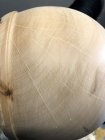I'm learning. Lot's of good advice here. I guess I need some help slabbing as I'm very slow with a these wonderful disabilities. I'm going to make a sawbuck that I can roll logs onto and get a better position for slabbing. I have almost a whole cherry tree with some of the pieces weighing well over 200 lbs. So far, after keeping them in the yard on pallets, with a tarp over them, none have started checking yet; but I am NOT looking forward to handling them!
Hit youtube for videos of people prepping blanks or moving logs without machinery. You can do more than you think with some rope and long, sturdy levers.
The next two are from The Survival Sherpa - Good stuff.
www.youtube.com/watch?v=QFDGGht3CQU


